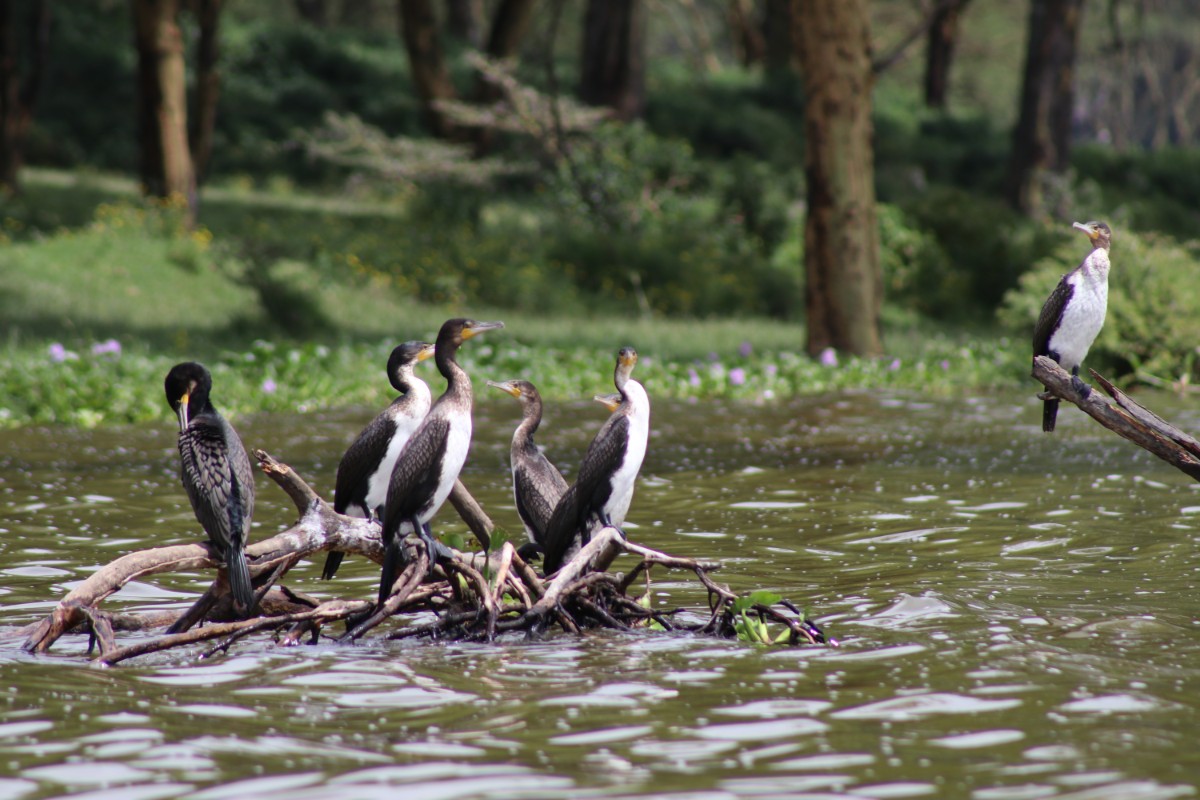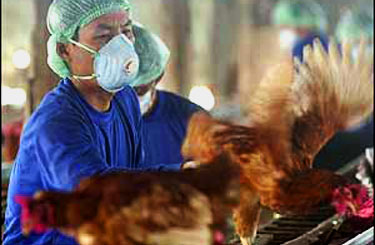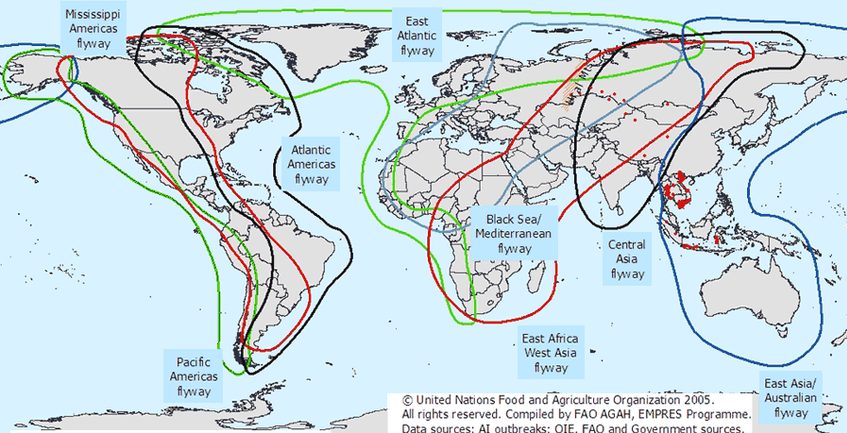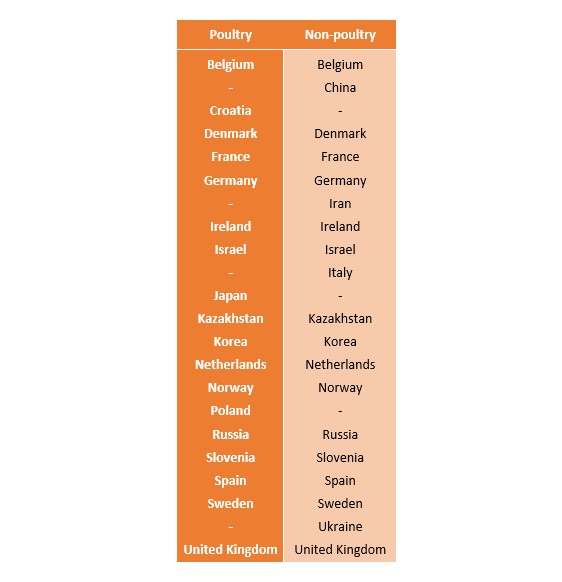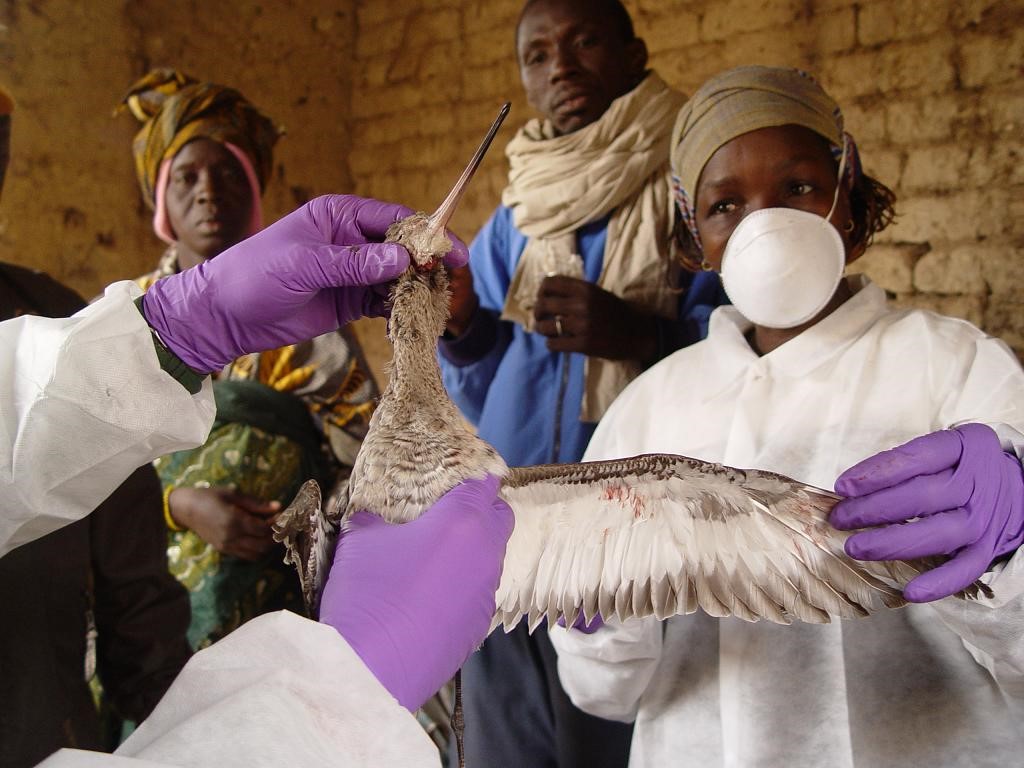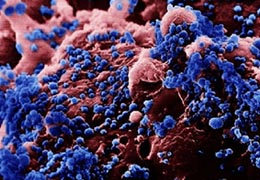
As winter sets in in Europe and Eurasia, millions of migratory birds head south into Africa; this raises concern that the ongoing and spreading epizootic of avian influenza A type H5N8 may be reaching African shores, if not already the case.
Map below : H5N1 Outbreaks in 2005 and Major Flyways of Migratory Birds. FAO and Wetlands International (2005)
The H5N8 type influenza is regarded as pathogenic (types H5 and H7) and is currently manifesting itself in a variety of ways, from asymptomatic and sub-clinical to highly lethal in some populations; many of the findings in wild birds are based on the discovery of dead animals.
H5N8 is reported in the northern hemisphere almost every year since 2014 (where it emerged in the Republic of Korea). It has been reported at least since the eighties (Ireland).
It is labelled highly pathogenic on the basis of an intravenous pathogenicity index (IVPI) greater than 1.2 (or as an alternative at least 75% mortality).
This year’s H5N8 outbreak was first reported by Russia to the OIE in wild birds on the 4th of August 2020 and this report was followed by reports from Kazakhstan (17 September 2020, both poultry and wild birds) and a string of rapidly succeeding reports, in both poultry and non-poultry species, from (alphabetically) Belgium, Croatia, Denmark, France, Germany, Italy, Ireland, Israel, Netherlands, Norway, Slovenia, Spain, Sweden, Ukraine and the UK. Eastwards, the disease has been reported in China, Iran, Japan and Korea (South).
Poultry is defined as ‘all domesticated birds, including backyard poultry, used for the production of meat or eggs for consumption, for the production of other commercial products, for restocking supplies of game, or for breeding these categories of birds, as well as fighting cocks used for any purpose’.
Birds that are kept in captivity for any reason other than those reasons referred above, including those that are kept for shows, races, exhibitions, competitions or for breeding or selling these categories of birds as well as pet birds, are not considered to be poultry and are reported to the OIE as non-poultry along with all wild bird species.
Whatever the species involved, all cases of H5 and H7-type influenzas must be reported (notified) to the OIE, even if there is indication or proof that they are low pathogenic. For other types of avian influenzas, only the highly pathogenic types must be reported to the OIE, e.g. H9.
However, notification of infection in non-poultry birds will not affect the disease status of the country in respect of poultry. The standard states that :
Infection with influenza A viruses of high pathogenicity in birds other than poultry, including wild birds, should be notified in accordance with Article 1.1.3. However, a Member Country should not impose bans on the trade in poultry and poultry commodities in response to such a notification, or other information on the presence of any influenza A virus in birds other than poultry, including wild birds
So far this year, no African country has reported H5N8.
However Cameroon, Congo (Democratic Republic), Egypt, Niger, Nigeria, South Africa, Tunisia, Uganda and Zimbabwe reported H5N8 in the course of 2017, with numerous follow-up reports being submitted well into 2020.
Sampling wild birds in West Africa. Picture (c) A. Caron (CIRAD) 2006
Countries in Africa are encouraged to actively conduct surveillance for this H5N8 type and recommend adherence to the prescribed requirements for biosecurity procedures for all poultry owners and quarantine restrictions in zones where cases have been identified. Although these are strictest for larger flocks and facilities, anyone keeping poultry should be aware of the situation and consider increasing biosecurity measures as the condition is spread via bird to bird contact or contaminated body fluids such as faeces.
The steps that can be taken to ensure good biosecurity include:
Human infection with the H5N8 virus cannot be excluded, although the likelihood is low, based on the limited information obtained to date (WHO). The disease is not in any way related to Covid-19 or SARS-CoV-2.
Latest OIE Highly Pathogenic Avian Influenza (HPAI) Report N° 18: November 13 to December 3, 2020
